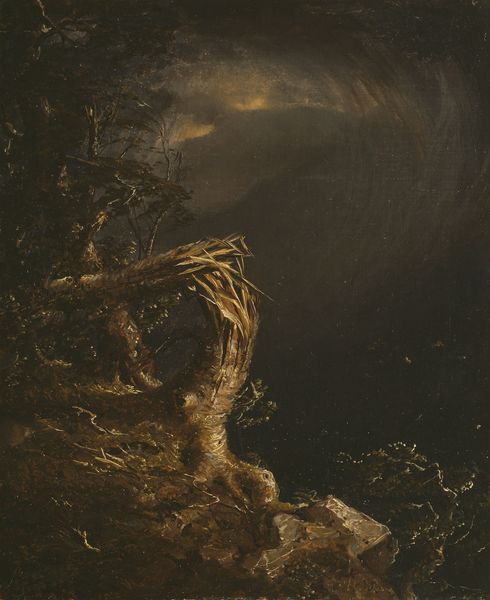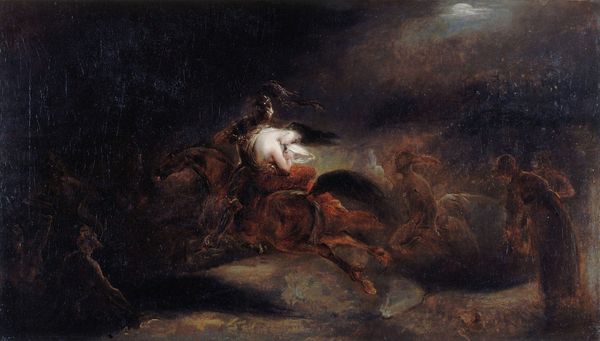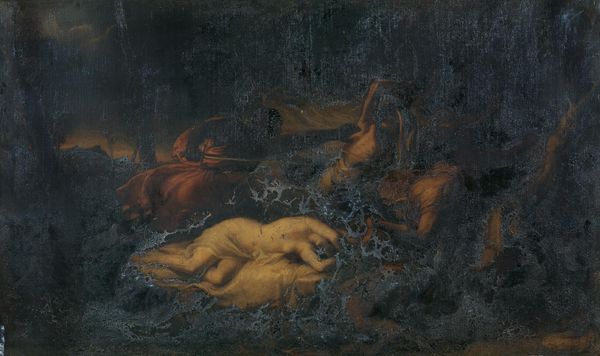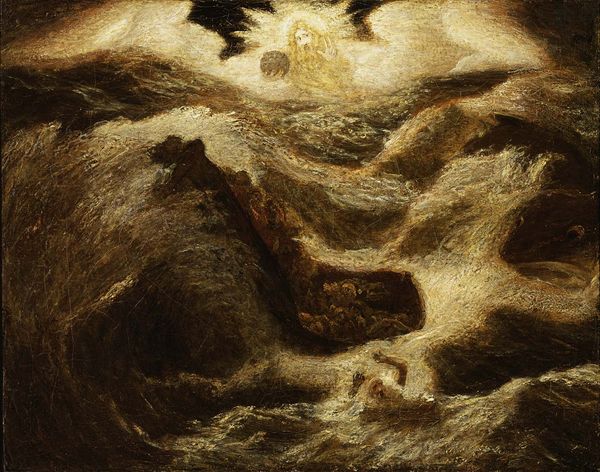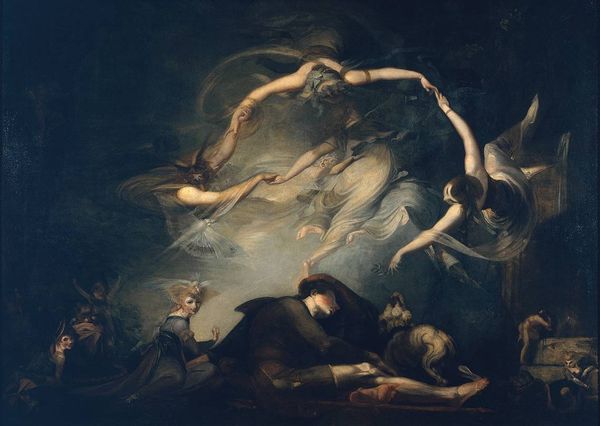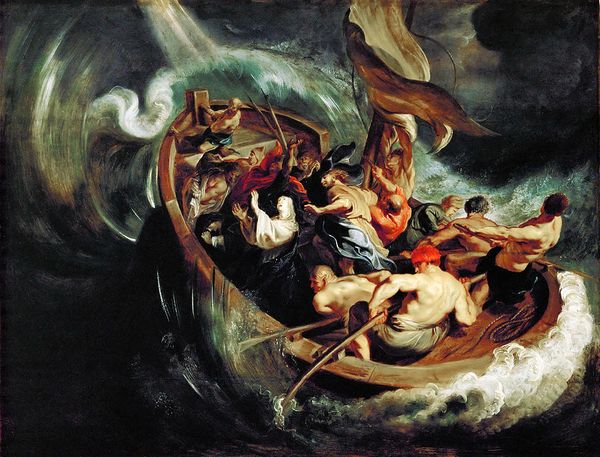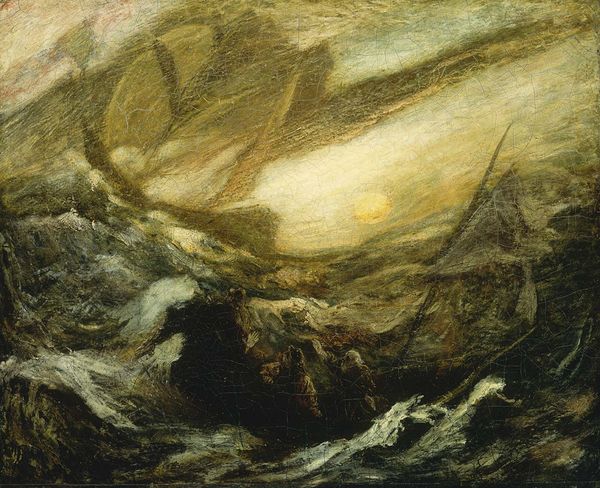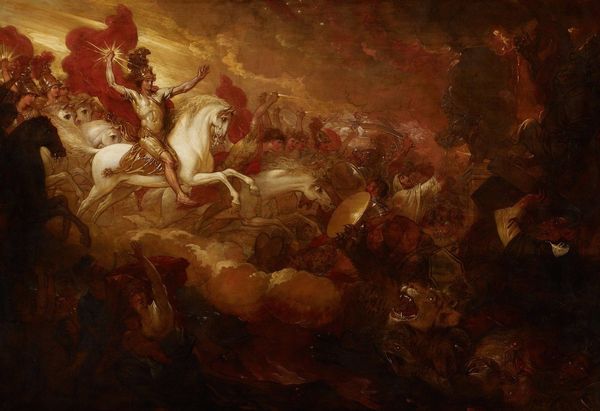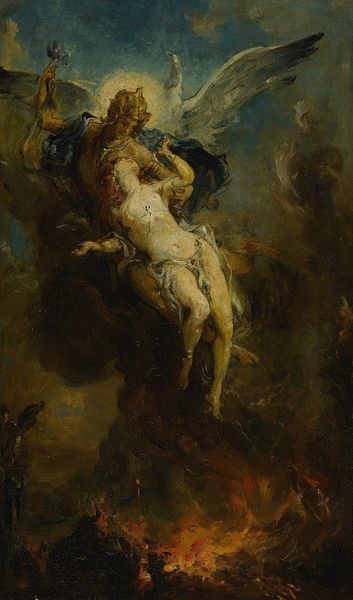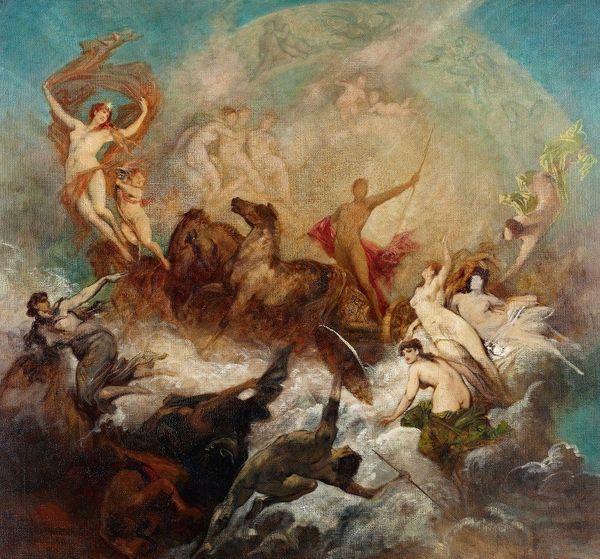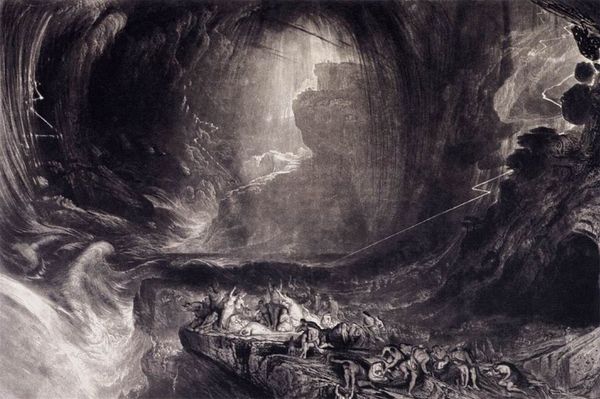
painting, oil-paint
#
baroque
#
painting
#
oil-paint
#
figuration
#
mythology
#
history-painting
#
nude
Copyright: Public Domain: Artvee
Curator: Rubens’s “Hero and Leander,” painted around 1604 with oil, what strikes you? Editor: It’s incredibly dramatic! The swirling figures and dark palette definitely convey the chaos of the story. What fascinates me most is the density of the paint itself; you can almost feel the weight of the water pulling them down. How would you interpret this work through a materialist lens? Curator: The density is key, as you’ve noticed. I think, we need to see the value of oil paint beyond only a picture. Consider the economic structures behind the work. Where did Rubens source his pigments? How were they processed? Who were the laborers involved in their production? Also, consider the commission; this wasn’t just artistic expression. The patron shaped the making and meaning here. What does the mythology add, if anything, to understanding this work as cultural product and status display? Editor: That's really interesting; I hadn't considered it that way. So the raw materials are not simply tools but products of extensive, perhaps even exploitative, labor networks? And the patron uses the mythological subject, and the skill evident in manipulating oil paint, as a means to flaunt his sophistication? Curator: Precisely. Now, what does the sensuality of the nude figures, realized with those imported pigments, signify in terms of cultural consumption? It’s all connected – the material, the mythological, and the social power play. The myth of Hero and Leander is translated through artistic skill and expensive goods into social capital for its patron. Editor: So, by understanding the materials and means of production, we gain insights into not only the art itself, but also the society and power dynamics of the time? It gives the painting a new layer of depth. Curator: Exactly. It compels us to look beyond surface appearances and see art as a product of specific historical and economic conditions. It makes you think about all the stages and people that get missed in the narrative of great works of art.
Comments
No comments
Be the first to comment and join the conversation on the ultimate creative platform.

